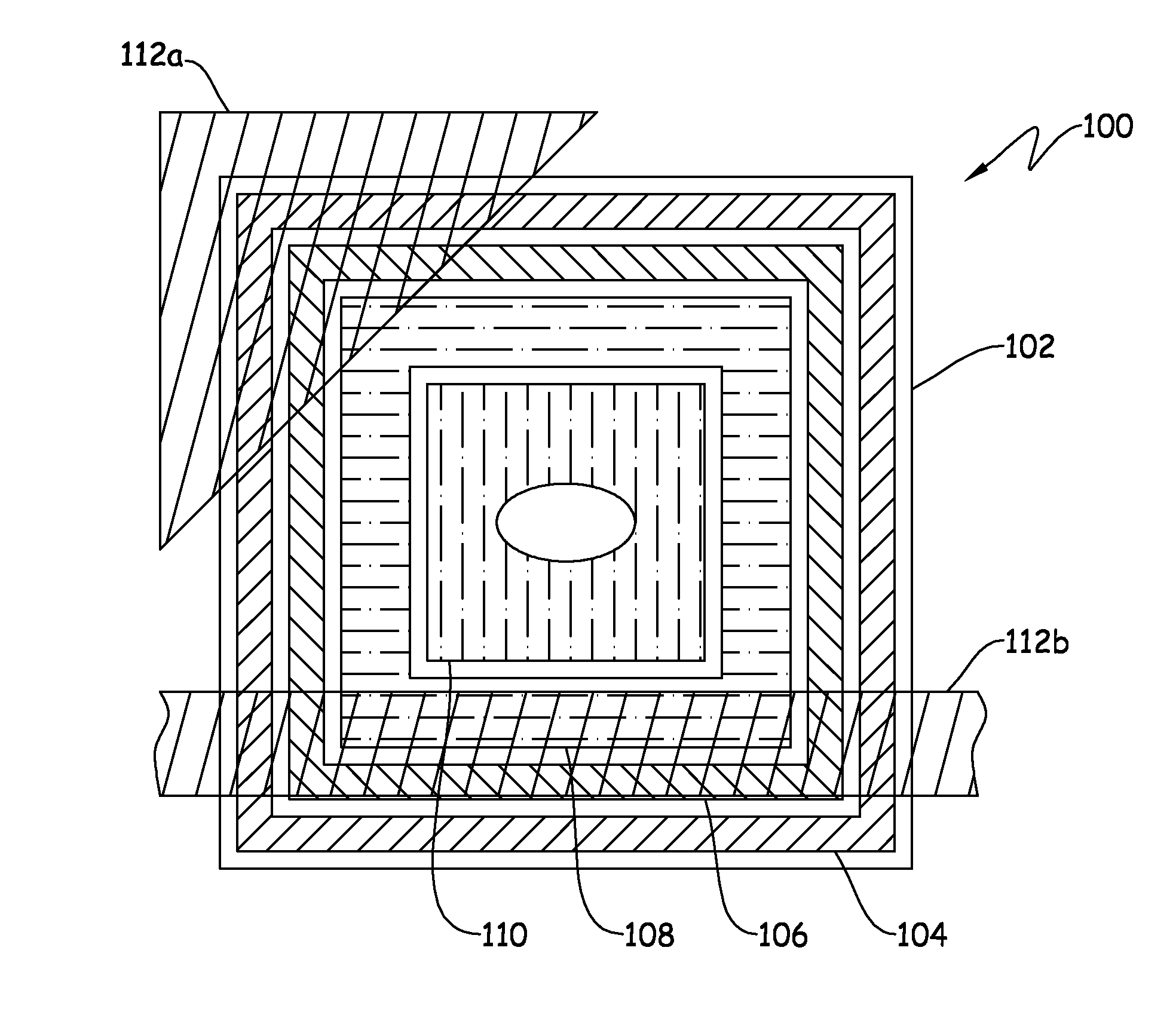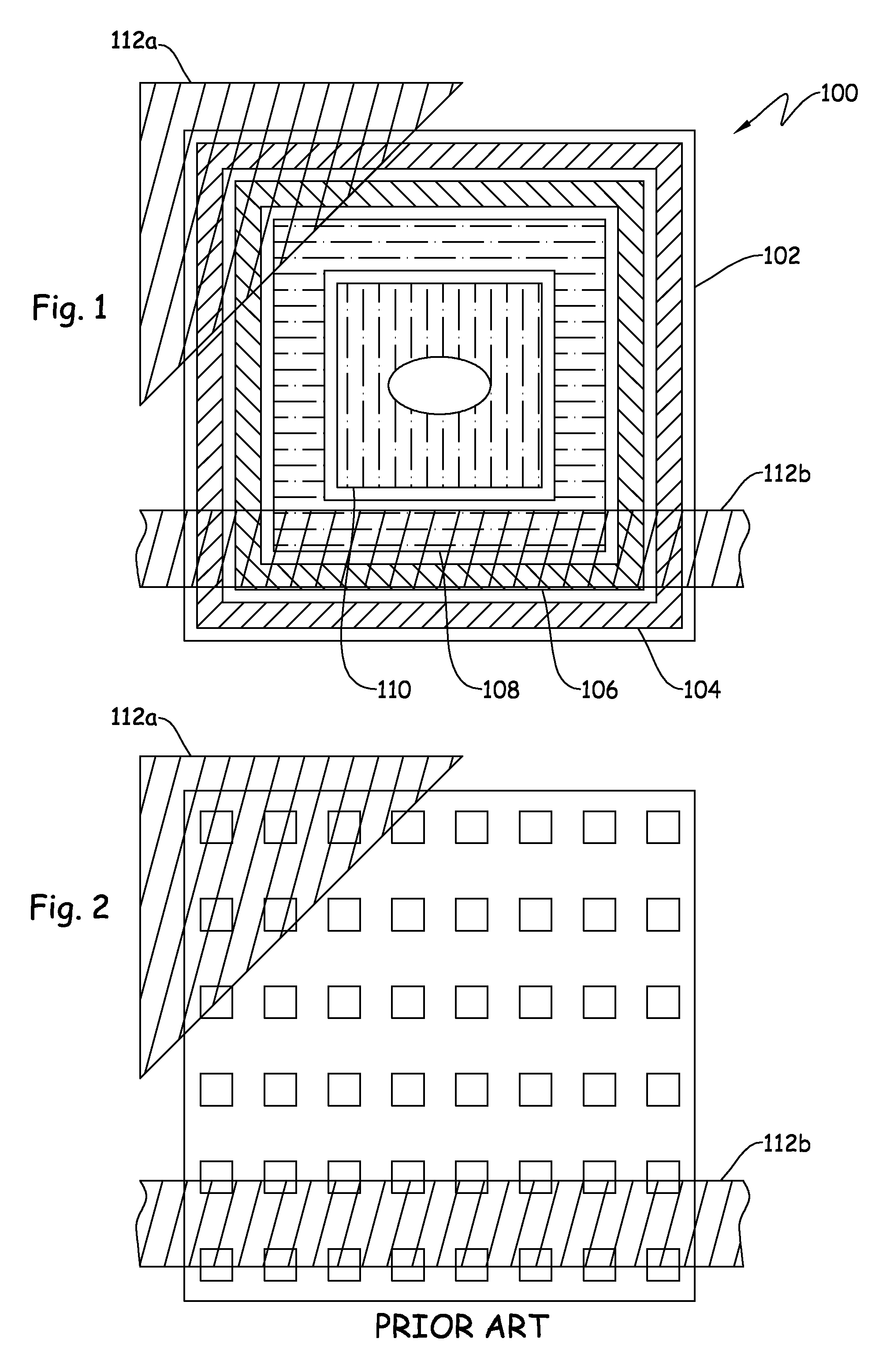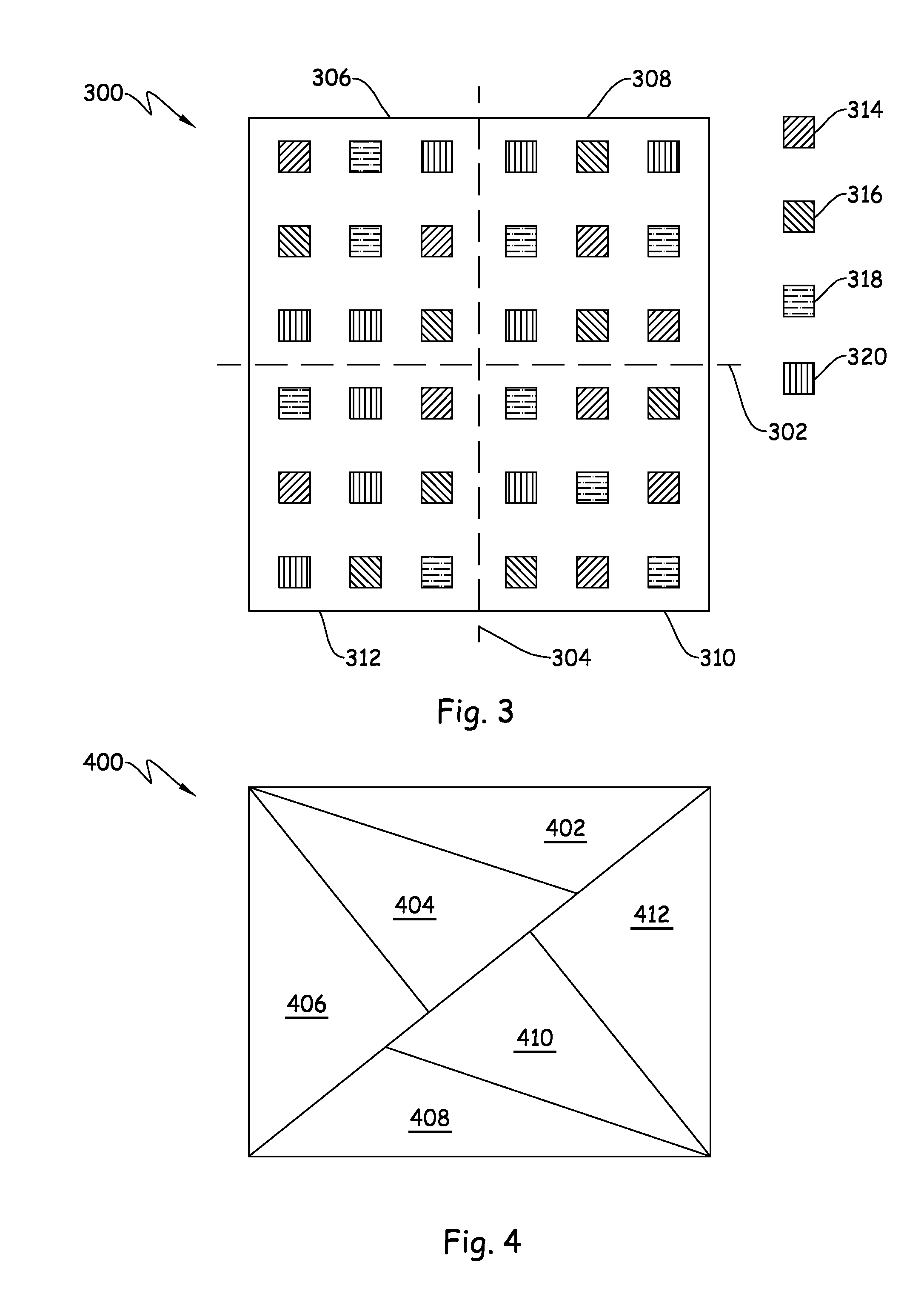Photo-voltaic device having improved shading degradation resistance
a photovoltaic device and degradation resistance technology, applied in the direction of pv power plants, sustainable buildings, instruments, etc., can solve the problems of increasing the cost and complexity of the device, still subject to incident light, and the number of bypass diodes required to completely avoid the possibility of reverse bias occurren
- Summary
- Abstract
- Description
- Claims
- Application Information
AI Technical Summary
Benefits of technology
Problems solved by technology
Method used
Image
Examples
Embodiment Construction
[0018]Referencing FIG. 1, a photovoltaic (PV) device 100 is schematically represented. The PV device 100 includes an active solar area 102 that defines a number of PV cell sets. Each PV cell set includes one or more PV cells. Where multiple PV cells form a PV cell set, the PV cells forming the PV cell set are coupled in a parallel electrical configuration. The PV device 100 includes four PV cell sets, 104, 106, 108, 110. The PV cell sets 104, 106, 108, 110 are arranged in a concentric framing arrangement. The concentric framing arrangement includes outer ones of the PV cell sets 104, 106, 108, 110 being positioned further from a geometric center of the active solar area 102. An outer concentric framing PV cell set may be positioned fully or partially outside of the inner concentric framing PV cell set (e.g. PV cell set 104 is positioned fully outside PV cell set 106). The concentric framing arrangement provides a favorable robustness to shading induced reverse biasing for a wide var...
PUM
 Login to View More
Login to View More Abstract
Description
Claims
Application Information
 Login to View More
Login to View More - R&D
- Intellectual Property
- Life Sciences
- Materials
- Tech Scout
- Unparalleled Data Quality
- Higher Quality Content
- 60% Fewer Hallucinations
Browse by: Latest US Patents, China's latest patents, Technical Efficacy Thesaurus, Application Domain, Technology Topic, Popular Technical Reports.
© 2025 PatSnap. All rights reserved.Legal|Privacy policy|Modern Slavery Act Transparency Statement|Sitemap|About US| Contact US: help@patsnap.com



